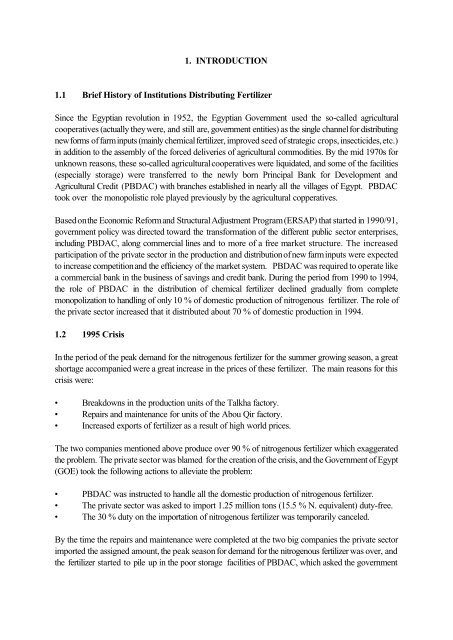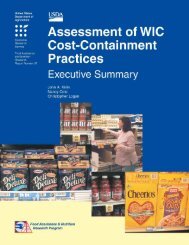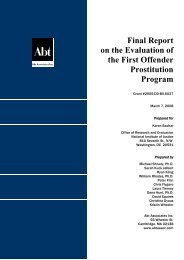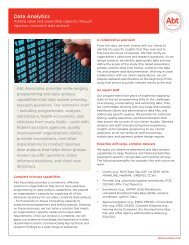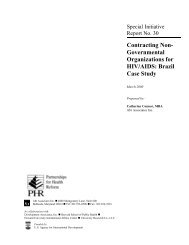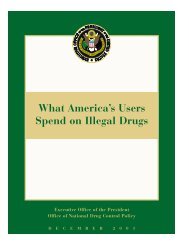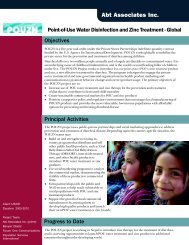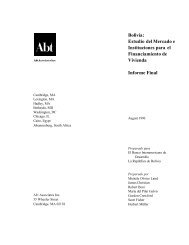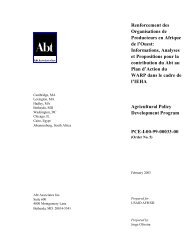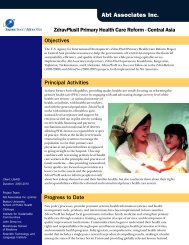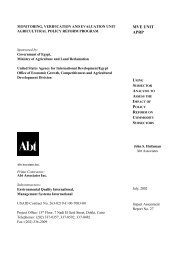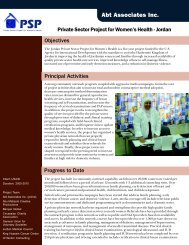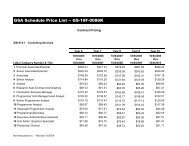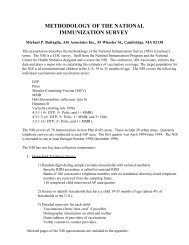Fertilizer Production And Marketing In Egypt ... - Abt Associates
Fertilizer Production And Marketing In Egypt ... - Abt Associates
Fertilizer Production And Marketing In Egypt ... - Abt Associates
You also want an ePaper? Increase the reach of your titles
YUMPU automatically turns print PDFs into web optimized ePapers that Google loves.
1. INTRODUCTION<br />
1.1 Brief History of <strong>In</strong>stitutions Distributing <strong>Fertilizer</strong><br />
Since the <strong>Egypt</strong>ian revolution in 1952, the <strong>Egypt</strong>ian Government used the so-called agricultural<br />
cooperatives (actually they were, and still are, government entities) as the single channel for distributing<br />
new forms of farm inputs (mainly chemical fertilizer, improved seed of strategic crops, insecticides, etc.)<br />
in addition to the assembly of the forced deliveries of agricultural commodities. By the mid 1970s for<br />
unknown reasons, these so-called agricultural cooperatives were liquidated, and some of the facilities<br />
(especially storage) were transferred to the newly born Principal Bank for Development and<br />
Agricultural Credit (PBDAC) with branches established in nearly all the villages of <strong>Egypt</strong>. PBDAC<br />
took over the monopolistic role played previously by the agricultural copperatives.<br />
Based on the Economic Reform and Structural Adjustment Program (ERSAP) that started in 1990/91,<br />
government policy was directed toward the transformation of the different public sector enterprises,<br />
including PBDAC, along commercial lines and to more of a free market structure. The increased<br />
participation of the private sector in the production and distribution of new farm inputs were expected<br />
to increase competition and the efficiency of the market system. PBDAC was required to operate like<br />
a commercial bank in the business of savings and credit bank. During the period from 1990 to 1994,<br />
the role of PBDAC in the distribution of chemical fertilizer declined gradually from complete<br />
monopolization to handling of only 10 % of domestic production of nitrogenous fertilizer. The role of<br />
the private sector increased that it distributed about 70 % of domestic production in 1994.<br />
1.2 1995 Crisis<br />
<strong>In</strong> the period of the peak demand for the nitrogenous fertilizer for the summer growing season, a great<br />
shortage accompanied were a great increase in the prices of these fertilizer. The main reasons for this<br />
crisis were:<br />
• Breakdowns in the production units of the Talkha factory.<br />
• Repairs and maintenance for units of the Abou Qir factory.<br />
• <strong>In</strong>creased exports of fertilizer as a result of high world prices.<br />
The two companies mentioned above produce over 90 % of nitrogenous fertilizer which exaggerated<br />
the problem. The private sector was blamed for the creation of the crisis, and the Government of <strong>Egypt</strong><br />
(GOE) took the following actions to alleviate the problem:<br />
• PBDAC was instructed to handle all the domestic production of nitrogenous fertilizer.<br />
• The private sector was asked to import 1.25 million tons (15.5 % N. equivalent) duty-free.<br />
• The 30 % duty on the importation of nitrogenous fertilizer was temporarily canceled.<br />
By the time the repairs and maintenance were completed at the two big companies the private sector<br />
imported the assigned amount, the peak season for demand for the nitrogenous fertilizer was over, and<br />
the fertilizer started to pile up in the poor storage facilities of PBDAC, which asked the government


